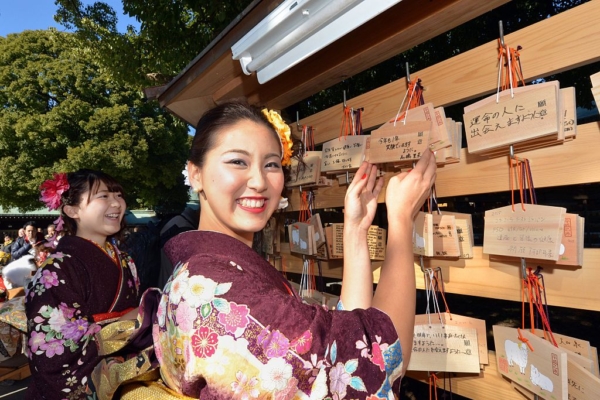Due to the significant depreciation of the Japanese yen, foreign tourists have been flocking to Japan, causing not only a surge in the price of Japanese rice but also an increase in demand for Japanese wood. The reason is that tourists highly appreciate traditional wooden products in Japan, such as shrine votive tablets and sushi rice boxes.
Japan received a record-breaking 17.8 million tourists in the first half of this year, far exceeding the pre-pandemic levels. On September 18, the Japan National Tourism Organization released estimated data showing a 36.0% increase in foreign visitors to Japan in August compared to the same period last year, reaching 2.933 million. Among them, Chinese tourists accounted for 745,800, almost doubling from the previous year; South Koreans were 612,100, up 7.6%; Taiwanese were 564,300, up 42.4%; and Hong Kong visitors were 246,600, up 19.6%.
Iconic Japanese dishes like sushi, onigiri, and yakitori don all revolve around rice and are beloved by tourists. The surge in tourists has become one of the reasons for the sharp increase in Japanese rice prices. In August, white rice in Japanese supermarkets was often sold out, with stores limiting purchases to one bag per person. Local media NHK attributed the shortage of rice in part to the influx of tourists, driving up demand for sushi and other rice-based dishes.
The increase in tourists has not only boosted rice demand but also significantly increased the demand for wood.
According to a Nikkei Asia News report on October 5, traditional wooden containers used for steamed rice have become popular among foreign tourists. At a woodworking shop called Fujikura Store in front of Naritasan Shoshoji Temple in Chiba Prefecture, east of Tokyo, more and more foreign tourists are looking to purchase similar vessels to those used in sushi restaurants.
“Vessels made of wood that sell for as high as 20,000 to 30,000 yen are selling well. Our unit sales have increased fivefold since before the pandemic,” said Ken Fujikura, who operates the store.
An official in charge of shrine activities at the Nikko Toshogu Shrine in Tochigi Prefecture, northeastern Tokyo, which includes the issuance of votive tablets, noted an increase in foreign tourists purchasing votive tablets compared to pre-pandemic levels.
The term “votive tablet” refers to palm-sized wooden tablets with images of horses or other designs, on which believers write prayers or wishes.
The official at Nikko Toshogu Shrine said, “Foreign tourists tend to buy in bulk when on group tours, possibly because the depreciation of the yen has made them more affordable.” Votive tablets priced at 1,000 yen (about 6.8 US dollars) each are particularly popular.
Located in Saitama Prefecture in northern Tokyo, Kawagoe Hikawa Shrine is renowned for its votive tablets, with an open-air tunnel adorned with numerous tablets hanging on the sides and above. Many votive tablets are inscribed in English, Korean, and Chinese.
Votive tablets are typically made from wood sourced from North America. Currently, the price of wood at a timber wholesaler in Shinkiba, Tokyo, is about 130,000 yen per cubic meter, three times higher than before the pandemic.
While part of the price increase is attributed to the weak yen, an official from the wholesaler stated, “Votive tablet producers are working hard to meet demand. In addition, the demand for wood is also growing.”

